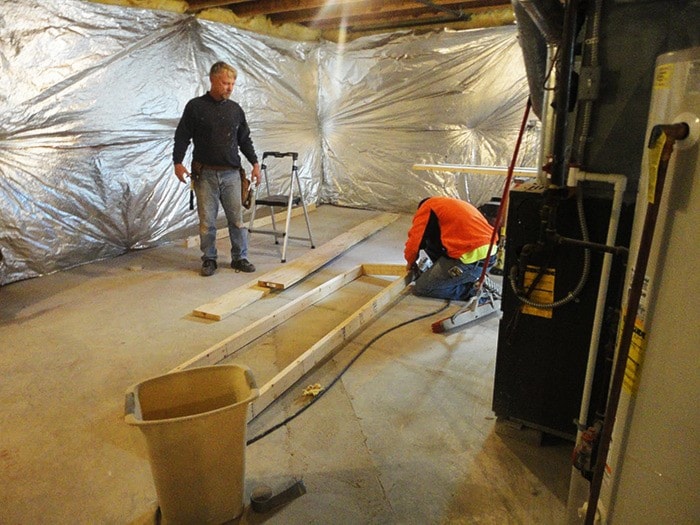Basement renovations are popular home-improvement projects because of their ability to increase a home’s market value and provide additional living and storage space.
Most homeowners renovate their basements to increase usable space.
Before you begin your basement reno project, think about your family’s needs. The reno may be to create a family room, laundry room, game room, guest bedroom, bathroom or a rental unit with a small kitchen.
Think long-term when deciding on your project’s outcome and a design, so you can easily transform rooms later in life.
It’s important that a detailed plan of what you want your finished basement to look like is developed to ensure you have a good idea of how it will all fit together.
Think about the possibilities as it is far easier to make changes in the plan than it is when walls have been put up.
And a basement reno can also be a great opportunity to add features to make a house more energy-efficient, environmentally friendly, and less expensive to maintain.
To help make a basement is green as possible, identify whether your basement has moisture issues and correct them before renovating.
Moisture problems can damage or destroy materials and finishes and possibly ruin your renovation investment.
Use moisture-resistant materials and finishes to prevent future moisture problems and discourage mold growth.
To improve a basement’s energy efficiency, and reduce monthly utility bills, add insulation to walls and floor wherever possible, as well as exposed cold and hot water pipes.
Install high-efficiency Energy Star-rated appliances, windows and lights and seal leaks in the forced-air system ducts. And ensure you good air circulation and ventilation in any rooms added in the basement reno.
Test your basement for radon, methane and other soil gases before you begin in earnest. This helps create a healthy and safe environment and helps you cost-effectively repair, as part of your renovation, any potential problems.
Choosing high-quality materials and products for your basement reno that can be adapted to changing needs and abilities as you age is a wise approach. Things like including solid backing around bathtubs and shower stalls to allow installation of grab bars for later in life can help save time and money down the road.
Also look to use low pollutant-emitting materials such as flooring, cabinets, counter tops, paint, cement, grout, sealants and caulking.
Choosing recycled or certified forest products for floors, cabinets, tiles, drywall and mill work will help reduce the environmental footprint of your reno. Wherever possible, use locally sourced, and lightly processed products and materials. And try to decide where and how you will reuse, recycle or properly dispose of old or discarded fixtures, cabinets and materials before you begin your basement renovation.
Plan ahead to avoid expensive rework and try to predict and address any potential problems or concerns at the beginning of your basement renovation.
Choose a classic, design that is timeless and won’t go out of style for many years can help reduce future costs and renos.
And remember to always include energy-efficient, long-lasting and water-saving features, wherever possible, to increase the longevity and lower the long-term cost of your renovation.
— with a file from CHMC
